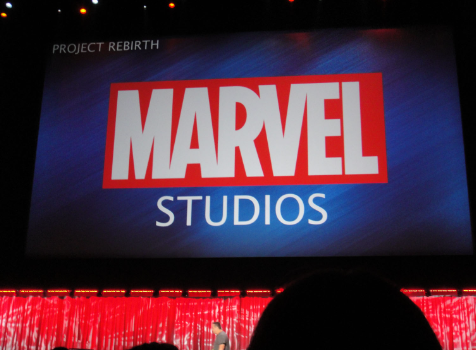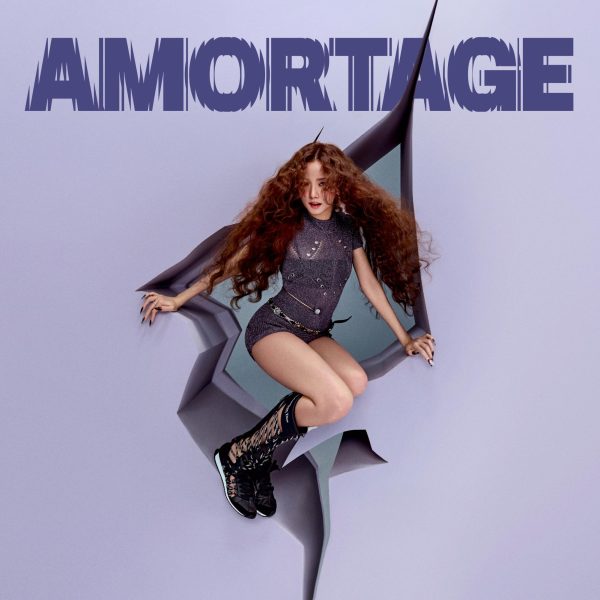Marvel Phase Four: The Fading Lights of Marvel’s Stardom

Photo Courtesy of Wikimedia Commons
I feel that it goes without saying, but Marvel Phase Four hasn’t been what fans expected. Since the highly-anticipated release of Avengers: Endgame, the writers and producers at Marvel have been trying to build off of the story that Endgame had concluded. Beloved characters had died, character arcs had come to an end, retiring the story that the world had been deeply invested in for the past decade. In all fairness, it’s hard to rival the success that Marvel Phase One to Three found with audiences, but Marvel tried.
Marvel Phase Four officially began after Endgame with Black Widow, a prequel set a couple of years before the events of Avengers’ Infinity War and Endgame, and the instantly-loved, hit television show, WandaVision. Both of these installations in the Marvel Cinematic Universe, otherwise known as the MCU, focused on characters that audiences loved but didn’t get enough screen time throughout the franchise so far. Audiences ate up WandaVision as an intriguing mystery developed throughout the season coupled with heartfelt moments that bonded the world with the complicated character of Wanda, otherwise known as the Scarlet Witch. WandaVision not only fleshed out Wanda, it also set her up as a potential villain but with a sympathetic backstory that would make her even more of an intriguing character. Black Widow didn’t exactly reach the same success that WandaVision did, but it introduced audiences to another sympathetic-potential villain, Yelena.
With all these villains getting set up, who would be the ‘heroes’? This is where Marvel ran into an issue. The heroes of the previous phases, such as Iron Man, Hulk, and Captain America had their stories come to an end, so their physical presence in these new installments won’t be probable. For the heroes such as Guardians of the Galaxy, Ant-Man, and Black Panther that were introduced to audiences a few years before Infinity War, they only have a few more movies before their story arcs reach the end. These characters had hit such an unseen level of stardom among audiences of all ages that achieving the same attention with new characters quickly became the biggest challenge for Marvel.
The Falcon and the Winter Soldier was Marvel’s first and forgotten attempt at introducing new icons to the world. While both the Falcon and the Winter Soldier, otherwise known as Bucky Barnes, had been a part of the early Marvel phases alongside the stars of the franchise, they never received the same attention as their co-stars. Unfortunately, this was mostly the same for their television debut. The hype around the show was quickly lost between WandaVision and the future release of another show, Loki.
While the forced partnership between those two characters presented/created an interesting dynamic as they tried to manage the world reeling from the events of Endgame without the help of their former heroes, it didn’t fully grasp audiences. A key element of Marvel’s success has been how important every installment in the franchise is supposed to be for the overall story. Every movie, show, and comic is a piece in a larger arc, drawing audiences to every release that Marvel puts out as they try to get every bit of the story. For The Falcon and the Winter Soldier to not have an interesting piece to add to the puzzle meant that the show’s attention quickly fizzled out.
Before Black Widow hit the screens, Marvel dropped its third show within the year, Loki. The character of Loki had been present throughout the franchise since The Avengers in Marvel Phase One as a malicious trickster villain with gray morals. The charisma of Loki and his actor, Tom Hiddleston, enchanted audiences over the years as his villain status evolved to one of an anti-hero. His dance between the lines of good and evil made him an interesting character as his unpredictability became the only thing predictable. This provided high potential for Loki, and they didn’t fall short on this one.
Loki was the first big puzzle piece in Phase Four as it cemented the concept of the multiverse in the MCU and set up Kang the Conqueror, the potential main villain for these next phases. The terrifying can of worms that are different universes, timelines, and “variants” was fully unleashed, opening endless possibilities for future installments in the franchise. The show ends with an ominous cliffhanger, already displaying the impacts of a chaotic multiverse.
After Black Widow premiered and the last episode of Loki was released, audiences were on a Marvel buzz. The last Spiderman movie in the Tom Holland trilogy was set to reach theaters at the end of the year and a new addition to the MCU, Shang-Chi and the Legend of the Ten Rings coming out a few months before, had the world’s attention. What many didn’t expect or give too much thought to was the show, What If…?
There isn’t too much to say about What If…? It stands as a fun collection of stories, highlighting all the possibilities caused by the events of Loki. While some of the characters introduced do show up later in movies, none of them gripped audiences like Iron Man or Captain America. This still left the world wondering where the MCU was to go next.
Up until this point, the MCU had been focused on characters that had already been seen before but Shang-Chi and the Legend of the Ten Rings finally brought a new hero to the world. Five installments into Phase Four and Marvel had just now introduced an interesting character that could stand as a solid hero for a new team of Avengers. Shang-Chi was a refreshing watch, emanating the earlier phases of the MCU that helped launch Marvel into stardom. It seemed that Marvel could keep going even after the incredible ending that was Endgame. With the upcoming release of Spider-Man: No Way Home set to be a hit, Phase Four continued to gain traction until Eternals threw audiences for a loop.
This movie marked the first official flop of Marvel Phase Four. Audiences weren’t quite sure what they were getting into when sitting down in the theaters but it’s a stretch to say that they expected the disconnected, painfully long, and confusing narrative of Eternals. While it brought new characters to the screen like Shang-Chi, there were too many to even care for one.
Marvel took too big of a bite on this one as they tried to fully flesh out every character’s individual story all while telling a compelling group-focused story. Eternals could possibly have worked as a tv-show as it would have allowed each character to be explored without worrying about keeping up with the pace of a movie. As the second lowest-grossing movie from the MCU, Eternals shattered the god-like status of Marvel. Lucky for them, the release of Hawkeye and the upcoming Spider-Man: No Way Home quickly replaced the disappointment of Eternals, but the seeds of doubt were planted in fans.
Hawkeye was another installment in Marvel Phase Four that focused on a character that had never gotten their time in the spotlight. For what it is, Hawkeye was a fun-filled relief from the heavy narrative direction Marvel had taken with Phase Four so far. It’s a bit campy, full of cheesy one-liners and goofy action scenes, but it’s this light-hearted approach that helps the story explore controversial subjects like revenge without it being depressing. This series also introduced a new hero, Kate Bishop, while bringing in characters like Yelena and Kingpin as villains. It felt like a good point to jump off of for future installments in the MCU, one that audiences could enjoy.
Now here’s what the world was really looking forward to when Phase Four was announced: Spider-Man: No Way Home. The excitement surrounding this movie had been building up all year as trailers dropped and pictures from set leaked the appearance of two other renditions of Spider-Man in the movie. This was the highest-anticipated Marvel movie since Endgame, they had to get this one right.
And for all things considered, Marvel pulled through. No Way Home gave an emotional, nostalgic, and exciting end to the Tom Holland Spider-Man trilogy. It definitely won’t be the last time audiences see Spider-Man within the MCU, but it perfectly wrapped up his arc while teasing the future of the character. But now, Marvel ran into the same issue they did with Endgame.
The excitement surrounding No Way Home had gripped the world so hard that once it was released, audiences didn’t know what to look forward to next. The bar had been raised once again, and the next couple of installments in the MCU didn’t seem as promising on the surface. The release of Moon Knight wasn’t for another couple of months, and Dr. Strange in the Multiverse of Madness interested audiences but didn’t gain the same attention as No Way Home. Almost three years after Endgame rocked the world, the wave of stardom that Marvel had ridden was fading halfway through Phase Four. This is where the MCU fell into a slump.
If Hawkeye was a ray of sunshine, Moon Knight is a thundercloud in a category-five hurricane. This doesn’t mean its story was bad, it was different from the cheesy one-liners and fun action-packed sequences that the MCU had been known for. Moon Knight presented a violent, puzzling thriller that takes a couple of episodes to understand, but it didn’t compel many to finish the series. There wasn’t much hype for this new character of Moon Knight, and the finale of the show wrapped up his story in such a way that audiences didn’t know if he would be seen again within the MCU.
Moon Knight perfectly highlights the biggest problem with Phase Four, which is the failure to connect audiences with new characters. This is what helped make the MCU so beloved in the first place, it’s only fitting that it would soon be its downfall. To a certain extent, it was inevitable. Every new character introduced will be ruthlessly compared to older characters in such a way that highlights all the little issues without giving them the chance to be their own character. The world is so attached to the past MCU that it might never fully enjoy the future. The best way that Marvel introduced these new characters was alongside older characters like Hawkeye. Unfortunately, though, this approach didn’t work for long.
Dr. Strange in the Multiverse of Madness, however, was a category-five hurricane. It destroyed the potential of Dr. Strange while also introducing another Captain-Marvel-esque character with an even less interesting story arc. America Chavez quickly became one of the least-enjoyable heroes within the MCU, leaving audiences not wanting more of her. The worst part of Multiverse of Madness though was the horrific character assassination that happened to Wanda.
Wanda had the biggest following as the fascinating, morally gray villain that drew audiences to any movie or show that had even a second of her in it. Trailers leading up to Multiverse of Madness hinted at her being the antagonist to Dr. Strange, exciting the world to see a darker side of Wanda. Nobody was expecting the cold brutality that deprived Wanda of the sympathy that WandaVision had built up. She went from an understandable antihero with motivations that made her worth rooting for to a heartless murderer whose sympathetic motivations were lost in her violence.
This movie marked itself as the hard downturn for Phase Four, as the world didn’t believe in a promising future for the MCU anymore. Besides Black Panther: Wakanda Forever, it didn’t help that the next couple of installments utterly flopped, cementing a collective disappointment in Marvel. The Ms. Marvel show barely made an impact on audiences, and Thor: Love and Thunder went devastatingly overboard in replicating the charm of Thor: Ragnarok. Even mentioning She-Hulk as a part of the MCU is giving it too much credit. Marvel was failing to connect the world with new characters while destroying the love that audiences had for old characters.
This utterly tore apart the aspirational, beloved image of the MCU. The world had been slowly losing interest in the MCU since Endgame but it turned from a lack of interest to a hatred of a once dearly beloved franchise. As Phase Four marked its official ending with the release of Wakanda Forever, the world now looked to the lineup of Phase Five with little faith. Ant-Man and the Wasp: Quantumania and Guardians of the Galaxy: Vol. Three stand as the last remnants of a golden age for the MCU, but hope for them isn’t high either. Hopefully, Marvel will begin to pull itself back up with these installments. Until then though, their stardom will only continue to fade.

Class of 2023
Extras Editor 2021-2023
Opinions Editor 2022-2023





